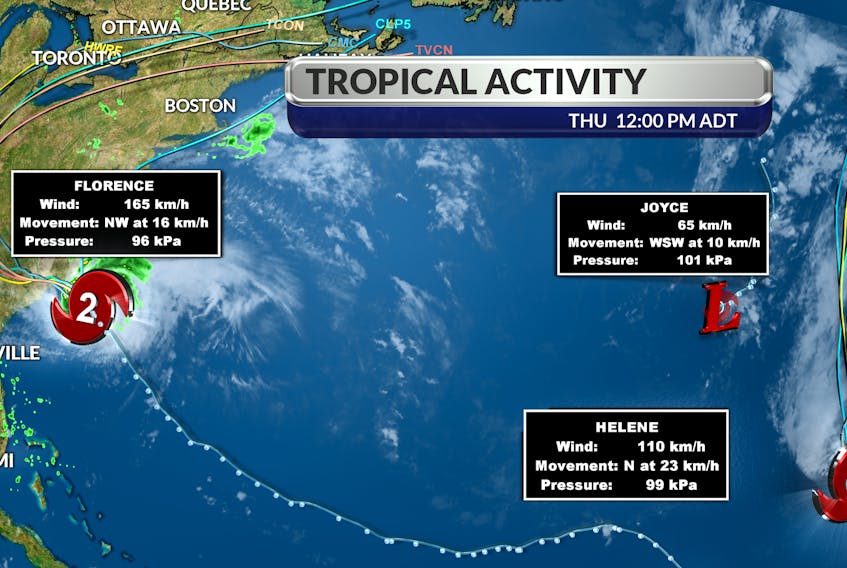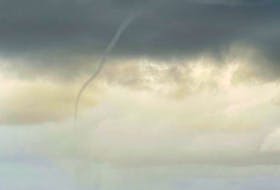It was sobering to watch satellite imagery and video footage of Florence.
The sixth named storm of the Atlantic Hurricane season was a monster. Florence formed off the coast of Africa, just SE of the Cabo Verde Islands. Many storms are born there, but not all.
Joyce is a good example. On Tuesday, satellite images revealed a strong area of low pressure located west-southwest of the Azores. It rapidly became organized and a named subtropical storm Thursday morning. Joyce is forecast to move toward the southwest for the next couple of days, and then turn to the northeast behind Hurricane Helene.
Yesterday, Ron from Coldbrook N.S., asked if there is a difference between a tropical storm and a subtropical storm.
There is a difference.
A tropical cyclone forms over a tropical ocean. Its centre is warmer than the surrounding air. It has no fronts and the strongest winds are near the Earth’s surface. If conditions are right, it goes on to become a hurricane.
A subtropical cyclone forms outside the tropics. It’s sometimes referred to as a mid-latitude cyclone. The centre of the storm is colder than the surrounding air. It has fronts and the strongest winds are in the upper atmosphere. A subtropical storm can generate as much wind but not usually as much rain as a tropical storm. If a subtropical storm intensifies enough to have hurricane force winds, then it has become fully tropical and can be called a hurricane.
Chief Meteorologist
Cindy Day









